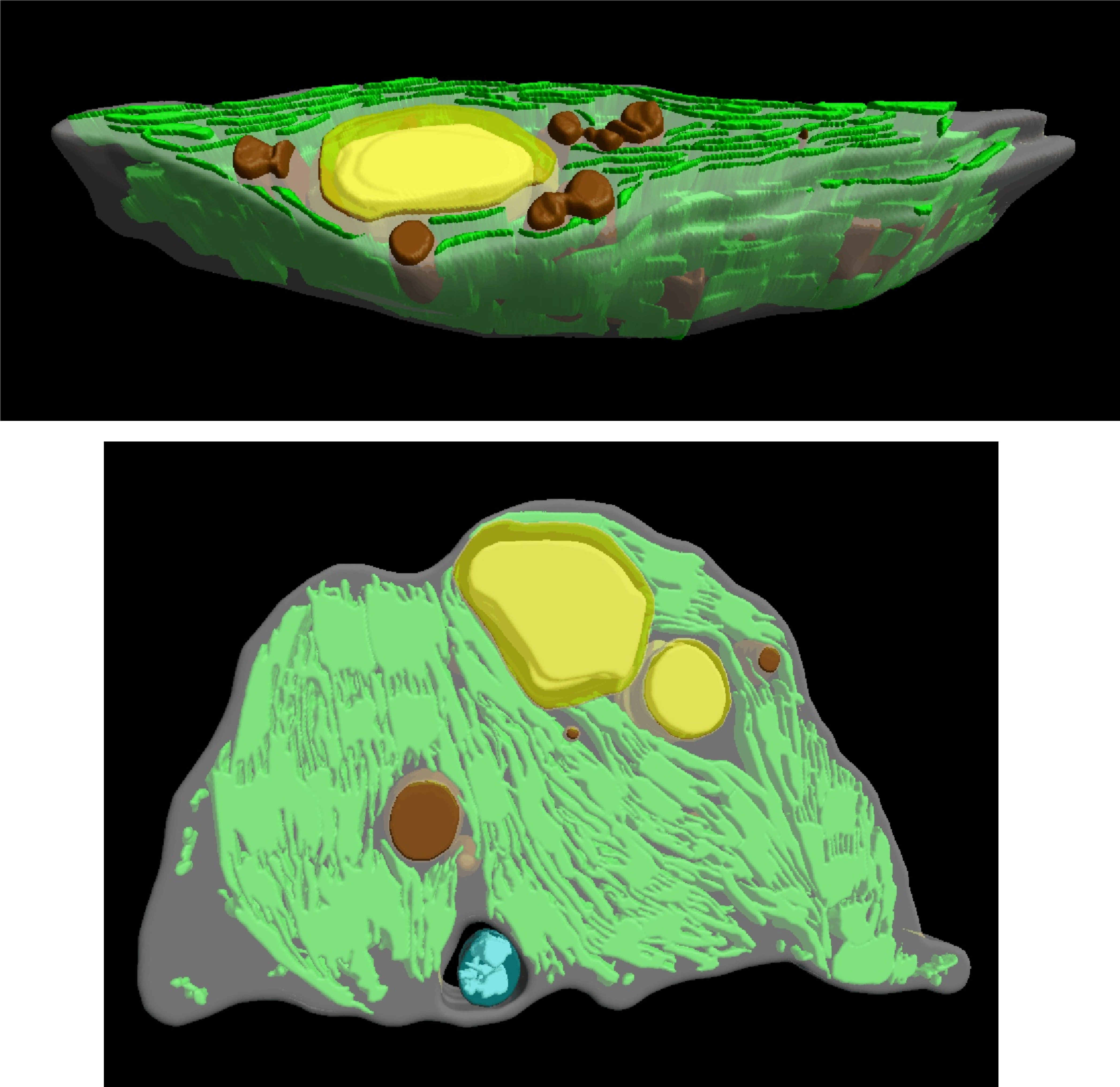Response of forest tree species to elevated carbon dioxide concentration: Chloroplast ultrastructure
On the level of chloroplast ultrastructure, we investigate the impact of elevated carbon dioxide concentration and irradiance on structure and performance of forest tree photosynthetic apparatus.
We use transmission electron microscopy, stereology and dual-axis electron tomography as tools to investigate ultrastructural changes in chloroplasts. This work is part of the project that aims to contribute to elucidation of changes to mesophyll cell photosynthetic performance of Norway spruce and European beech at different hierarchical levels and mechanisms lying behind, and to the knowledge on carbon sequestration by temperate trees. Sample preparation Dr. Radochová, data acquisition Dr. Bílý (Parasitol. Inst., CAS), dual axis tomography reconstruction Dr. Michálek, 3D volume rendering Dr. Janáček.

3D visualization of beech chloroplast acquired via dual-axis electron tomography in which thylakoids are colored green, starch grains are colored yellow and lipid particles (plastoglobuli) are colored brown. Note a cytoplasm-filled pocket with mitochondria colored blue.
